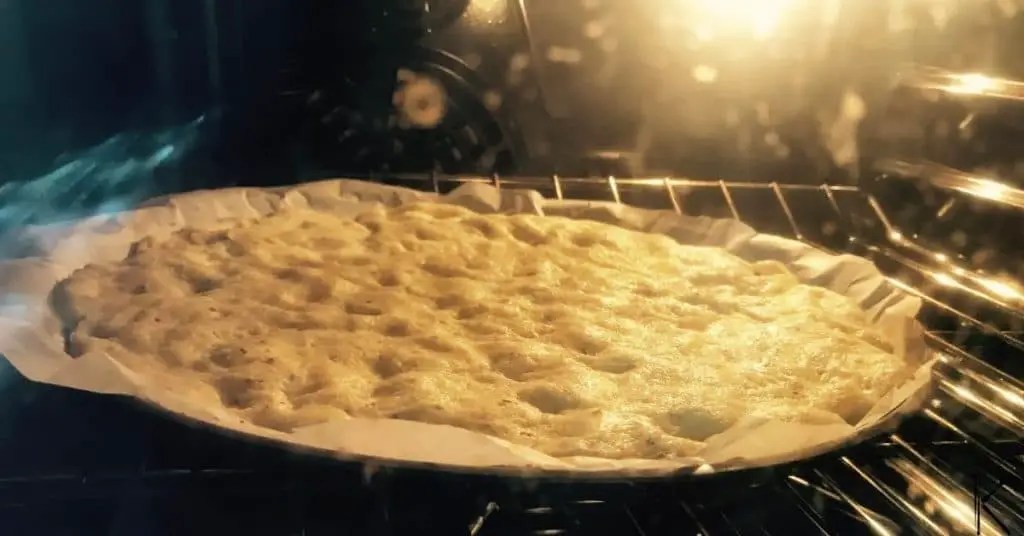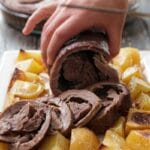In short, there are four ways to reheat leftovers to keep the original taste: (1) warming up food in an oven, (2) heating food on a stove, (3) reheating food in a microwave, and (4) warming food in an air fryer.
We have to admit that leftover food is really no mystery in everyday life. In fact, it is more common to have leftovers after lunch than to have everything eaten in the exact proportion you cooked.
The most common problem we have is how to preserve and reheat the food leftover. Because, simply, throwing away food is unprofitable, and to a lesser extent, wrong for many other reasons.
There is one golden rule when it comes to tips for reheating food, and that is that it is best to heat food the same way you cooked it. This, of course, is not a 100 percent rule, and there are always exceptions.
But for the most part, you won’t go wrong if you heat the food the same way you cooked it. So let’s unpack some basic knowledge about reheating food.
How to Store Leftovers Properly and Safely
First of all, let’s learn how to store food properly. This is primarily a key step if you later want to get delicious food that is safe to consume.
You wouldn’t believe how often people get food poisoning because it wasn’t stored well. For most dishes, you will be able to opt for a fridge or freezer.
Storing Food in a Refrigerator
The refrigerator is a real savior when it comes to storing food. And it is important to keep in mind a few key steps when storing food in the fridge.
Step 1: Follow the two-hour rule
When food stands on the kitchen counter at room temperature, bacteria begin to grow on it. The longer it stays, the more likely it is that unwanted guests have settled on your food leftovers.
So follow the so-called two-hour rule. Therefore, as soon as it cools down from the initial cooking, place the food in the refrigerator, i.e., within two hours of baking.
Step 2: Store food properly in a suitable container
It is best to choose a container in which the food fits ideally, that it is neither too big nor too small. You don’t want too much air to be in the box, and yet, everything has to fit nicely into it without it sticking out. Also, always cover leftovers with either a lid or aluminum foil.
Step 3: Stick to food duration restrictions
Always store food for a maximum of as long as the safety instructions suggest. It is, in most cases, 3 to 4 days. Do not keep food in the refrigerator for too long. Also, if you notice any strange phenomena on the food, mold, or peculiar smell, throw it away immediately.
Storing Food in a Freezer
The freezer will help you if you want to preserve leftovers for a long time, usually for a month or two. Freezing is suitable for most leftovers, but keep in mind that some foods will misbehave when you freeze them, that is, they will change either the texture or the taste. Mostly, reheating previously frozen leftovers will give excellent results.
Step 1: Freeze food the same day you cooked it
Don’t wait a day or two to decide to freeze food. Determine right away if you need it soon or want to keep it longer. If you freeze food within a few hours after cooking, it will most likely retain most of its flavor and be much tastier when reheated.
Step 2: Keep in mind the possibility of food duration
Many people think that food in the freezer can last indefinitely, but this is simply not true. Frozen food has its own shelf life. So it will undoubtedly happen that if you keep a dish frozen for too long, the texture will be destroyed, or it will lose its nutritional qualities.
How to Safely Reheat Leftovers
As we said, in most cases, it is best to heat the food in the same way as you cooked it. This, of course, does not have to be a firm rule for every dish, and some techniques are a bit clumsy for reheating leftovers, such as barbecue.
If you only have one or two pieces of meat to heat, you certainly don’t want to light the grill and spend time on it. Still, you can most often rely on a reheating technique that is identical to the cooking procedure. The most common heating methods are the following:
- oven
- stove
- microwave oven
- air fryer
So let’s break down some of the basic rules when it comes to each of these methods and how to safely reheat leftovers.
Warming Up Food in an Oven
You may have noticed reading some of our preheating articles, but the oven is usually the best choice for reheating, and very often our favorite recommended way. The advantages of an oven are numerous, but generally, the best thing is that the food is heated evenly and you can nicely control the heating process.
Also, when you want to preserve the food’s juiciness, an oven will be a great choice. The downside of the oven is that it requires slightly more time than other techniques. Here are some tips on how to better heat food in the classical or toaster oven.
Tip 1: Always preheat the oven before putting food in it
You may be a little impatient, but it’s better to let the oven heat up thoroughly before you put food in it. First, because that way you will get a tastier result. In some cases, the crunchiness and texture of the food depend on it being placed in a well-heated oven, not in a lukewarm one.
Second, you will find it easier to follow the warm-up because you will be able to regard the warm-up time instructions. If you put food in a lukewarm oven, food may either not get warm enough or burn.
Tip 2: Follow the temperature instructions
Each dish has a recommended reheating temperature. Although it seems to you that everything will be faster if you turn up the oven a little, this can sometimes result in the food drying out too much or burning up eventually. So stick to the recommended degrees. Also, to determine the sufficient internal temperature food thermometer can help.
Tip 3: For dishes that need to be juicier use a lid and add liquid as recommended
If you have some juicy piece of meat or food that dries quickly, most reheating tips will say add a little liquid, sauce, broth, or something else and cover the pan. You can use a lid or aluminum foil for this. If the instructions say to do so, do not skip this part. It will be the difference between a tasty and a juicy dish, or a dry cardboard mass.
Heating Food on a Stove
A stove is undoubtedly a much faster way to preheat than an oven, and most often, a much tastier way than a microwave. You can reheat a lot of food in a frying pan. You just need to pay attention to a few tips to make it better.
Tip 1: Pay attention to the heating temperature
Adjust the intensity of the fire to the dish you are reheating. Generally, you will get advice not to heat the pan to the maximum because the food could burn. Keep in mind that you are working with already baked food, so it is unnecessary to shock it with a very high temperature as with the first baking.
Tip 2: Use the appropriate oil
I am a big fan of olive oil, but the fact is that it does not have as high-temperature resistance as vegetable oil. For many baking techniques, olive oil is not suitable. So adjust your oil selection to the dish you are preparing.
Tip 3: Do not look away from the skillet
Unfortunately, you can’t put something to heat up in the skillet and go away as you do with the oven. You have to be vigilant about the food while frying it. In the blink of an eye, it could happen to burn. But the good thing is that warming up in the skillet doesn’t take longer than 5-6 minutes most often, so you’ll be done quickly.
How To Reheat Food in a Microwave
A microwave oven is often a poor choice for heating because it dries out food. But also, it is often the only way we have because we do not have the time or opportunity to dedicate to warming up, for example, if you are in the office. With the microwave, some tips can improve the result as well.
Tip 1: Do not heat food that is not suitable for the microwave
Unfortunately, the advice not to persist in heating food that is not suitable for the microwave is our first tip. Some dishes are simply ruined in the microwave, and as much as you want it, the result will not be good.
Tip 2: For greater juiciness use a lid
If you are trying to preserve the juiciness of a dish, you will need to add a little liquid and cover the container in which you heat the food either with a lid or with foil. Be sure always to leave a small steam opening as otherwise, the box could explode in the microwave. Also, always and without exception, use bowls that are made for the microwave.
Tip 3: Use shorter warm-up intervals
In most of our texts, you will find advice to use shorter heating intervals. Rather heat food four times for 30 seconds than leave it immediately for 2 minutes. This will give you a chance to cook the food more evenly. Between each interval, you have the opportunity to stir or turn the food as needed. Furthermore, it will give you the ability to keep the dish from drying out or overheating in some cases.
Warming Food in An Air Fryer
The air fryer is an excellent device for heating many types of food, and you will have the best results for baked, grilled, or breaded dishes.
Of course, you can also heat all other types, such as casseroles, leftover pasta, and other saucy dishes. However, for soups and liquid meals, we recommend the stove.
Each food will have specific instructions, but some steps of heating leftovers in the fryer apply to all.
Tip 1: Prepare the Basket
It will be easiest to heat in the original basket that came with the device. Some dishes like fried chicken, or leftover pizza for example, you can just put in the basket.
For some, you will need to cover the bottom with aluminum foil or baking sheet so that the sauce does not pour through the grates.
The most important rule is to pile only a few pieces at a time because an overcrowded basket can mean that the portions in the middle will remain cold while the surrounding ones will be overheated.
Tip 2: Adjust the Temperature
Heating with hot air has a significant advantage because it is swift and thorough. The proper internal temperature of the food must be achieved to destroy harmful bacteria.
However, remember that some foods do not like excessively high heating temperatures, and you’ll achieve a better result with medium heat.
If you are unsure about the right heat, it is best to look up your food in our list and see the tips.
FAQs
The two-hour rule is an instruction to store food in the refrigerator or freezer within two hours of cooking. This is a good rule of thumb to prevent the formation of unwanted bacteria on cooked food. Also, this way, you will preserve most of the flavors in the dish.
Most experts will advise you to reheat food only once. After each heating and cooling process, the possibility of bacteria formation is high, so it will often not be healthy to heat food more than once. Besides, food loses its consistency with reheating, so you are likely to lose delicious flavor and texture with repeated heating.
Cooling food before putting it in the fridge has little to do with the specific dish you store but with the other contents in the refrigerator. If you put a hot meal in the fridge, it will raise the refrigerator’s temperature and may affect other perishable foods. So it is good to cool the dish before storing it.
We reheat leftovers to bring them back to a safe and enjoyable eating temperature and restore some of their original taste and texture. Reheating helps reduce the risk of foodborne illnesses and ensures the food is still palatable for consumption.
Conclusion
For each dish, there is the best way you can reheat leftovers. Most often, the advice will be to heat the food the same way you prepared it, but this may not always be the case. Also, many dishes are perfectly good when reheated, and you don’t have to fear you won’t have a delicious meal. When reheating previously frozen leftovers, please thaw them properly first.
For more specific guides on reheating foods, please check the following articles:









